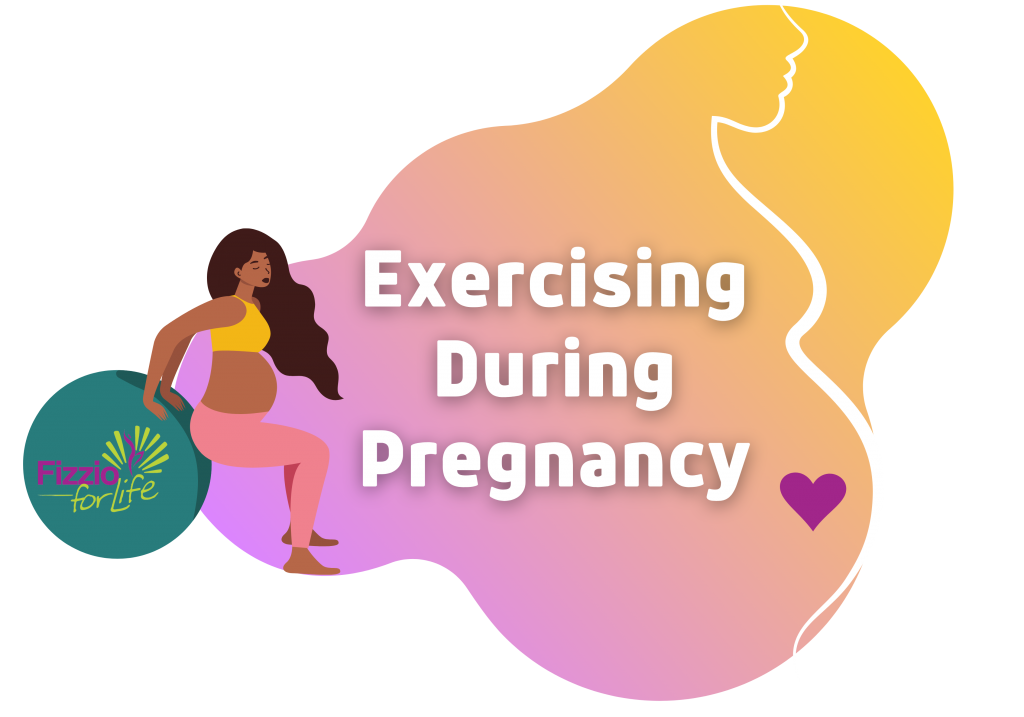Many many years ago exercise during pregnancy had been discouraged due to concerns for maternal and fetal health. More recent research has highlighted the benefits of exercise during pregnancy for both the mother and child.
There is strong evidence that regular exercise has many benefits for women with uncomplicated pregnancy. These include physical benefits for improved fitness, prevention of excessive weight gain, and psychological benefits related to body image and reduced symptoms of depression. There is growing evidence for the benefits of regular exercise in management of maternal-fetal conditions such as gestational diabetes and pre-eclampsia. In addition, regular exercise provides life-long benefits for all adults including reduced risk of cardiovascular disease and type II diabetes. Importantly, there is no evidence to suggest that regular exercise during an uncomplicated pregnancy is detrimental to the woman or fetus. As a result, all women with uncomplicated pregnancies should be encouraged to participate in regular exercise.
Despite these benefits, many women remain inactive or reduce their level of activity significantly during pregnancy.
So, how often & how much?
Many Australian women do not meet current physical activity guidelines and many significantly reduce their exercise participation during pregnancy. Current physical activity guidelines for Australian adults recommend being active on most days each week. Adults should aim to complete 150-300 minutes of moderate intensity physical activity each week, or alternatively, 75-150 minutes of vigorous exercise. In addition, muscle strengthening exercises should be performed on at least two days per week. These guidelines are also relevant for healthy pregnant women. For women that have been inactive prior to pregnancy, exercise should commence, however with a gradual increase in physical activity. For women with obstetric complications, exercise may still be appropriate, however medical evaluation should be undertaken prior to commencing an exercise program, and the exercise program should be modified for the individual.
Duration of exercise
Recommendations for exercise include being active on most days of the week for at least 30 minutes at a time. There is no evidence for an upper limit to exercise duration, however it is recommended that exercise does not exceed 60 minutes in duration, unless the intensity is light, primarily due to concerns regarding overheating. For previously inactive women or those that are overweight/obese, a shorter duration of exercise may be appropriate at the start of the exercise program, before slowly building up to 30 minutes.
Intensity of exercise
Intensity of exercise will depend on baseline level of fitness and previous exercise routine. For previously inactive women, maintaining a ‘moderate’ intensity is adequate to obtain health benefits. It may be beneficial to start at a light intensity and gradually increase exercise to a moderate intensity. For women who were previously active they should aim to maintain a moderate level of intensity. There is limited research regarding exercising at higher intensities during pregnancy, and as such there is no evidence-based safe upper limit which can be recommended. For women with a high level of fitness that are accustomed to regular vigorous exercise, there is no evidence to suggest that continued participation during pregnancy is harmful, however exercise should be adjusted based on changes in comfort and tolerance.
Modifications to Exercise due to Physiological Changes in pregnancy
Physiological changes (eg. Increase in body weight, increase in metabolic rate, increased ligament laxity) during pregnancy have some implications for exercise prescription. The following changes/modifications may be appropriate.
· Weight-supported activities such as stationary cycling or water-based exercise may be more comfortable in the later stages of pregnancy
· Minimising fast changes in direction may be more comfortable and appropriate due to changed distribution of body weight and increased ligamentous laxity
· Avoiding rapid changes in posture (eg. Lying to standing) due to decrease in blood pressure
· Avoid/minimise exercising in high temperatures for long periods of time, ensure adequate hydration and wear loose-fitting clothing
· Avoid performing exercises in supine (on back) for long periods of time in the second and third trimester· Avoid/minimise activities that involve jumping/bouncing/high impact due to increased load on pelvic floor. It is also recommended that targeted exercises for pelvic floor strengthening are undertaken.


